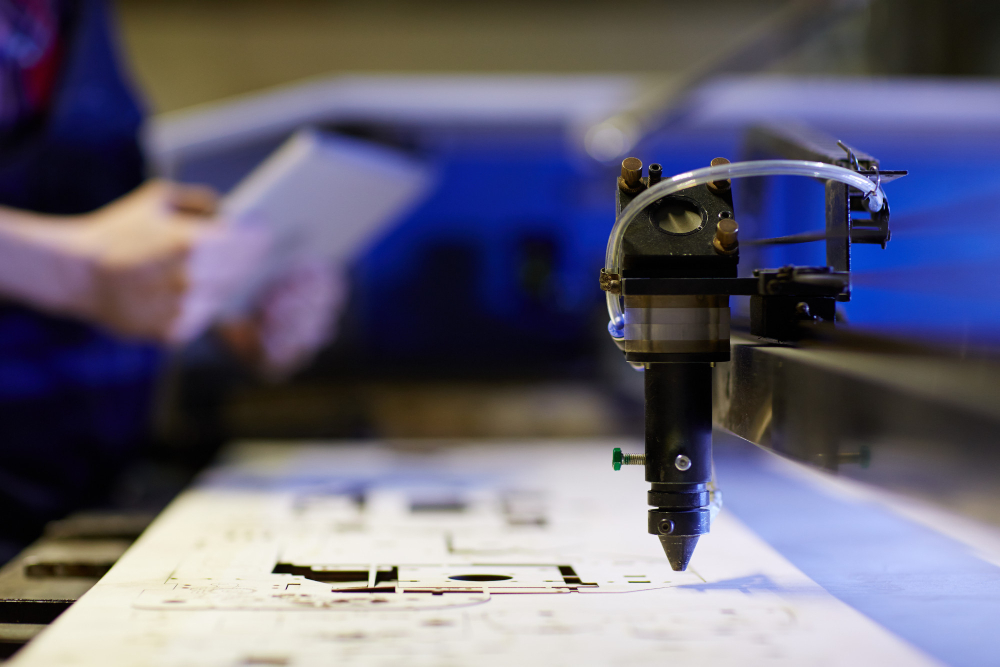
Table of Contents
- How Tool and Die Processes Power Modern Manufacturing
- Key Components in the Tool and Die Sector
- Embracing Technological Advancements
- Quality Control and Precision in Production
- Workforce Skills and Training in the Industry
- Sustainability Trends in Tool and Die
- Future Outlook: What’s Next for Tool and Die?
How Tool and Die Processes Power Modern Manufacturing
Tool and die processes are quietly foundational to nearly every large-scale manufacturing sector. From medical devices to consumer electronics, efficient production lines depend on custom-engineered dies and molds to shape raw materials accurately and quickly. Their reliability ensures products are produced to exacting standards, significantly reducing the frequency of defects, minimizing waste, and enabling high-volume output. For many manufacturers, partnering with a dedicated tool and die shop can be the difference between leading the market and falling behind. These shops deliver the specialized tools and expertise to keep operations running smoothly, adapt to new projects, and rapidly troubleshoot issues that arise during production.
Advanced tooling improves lead times and costs, enabling companies to respond faster to consumer demand and regulatory shifts. Auto manufacturers have reported a 30% decrease in cycle times after upgrading their manufacturing tooling. Robust investment in updated processes is crucial for success as customer expectations for quality and customization rise. Tool-and-die solutions are central to corporate strategies.
Key Components in the Tool and Die Sector
The sector encompasses an impressive array of specialized equipment, each fulfilling a precise function to support mass production. Stamping dies are widely used in the automotive, appliance, and technology sectors to form metal sheets into intricate shapes at extraordinary speeds, making it possible for products like car frames or smartphone components to be reproduced identically thousands of times per day. Injection molds shape complex plastic parts, from detailed gears to durable outdoor equipment, maintaining tight tolerances across millions of cycles. Fixtures and jigs may not grab headlines, but they are pivotal for holding workpieces steady, ensuring each machine movement is repeatable, and minimizing operator error risk.
Consider the example of an electronics manufacturer producing circuit boards. Without custom jigs and high-precision dies, even a minor misalignment could result in costly electrical failures or product recalls. In packaging, advanced molds help create lightweight but sturdy containers, reducing shipping costs and supporting eco-friendly initiatives. The interdependence between these tools allows entire industries to maintain quality standards, streamline assembly processes, and adapt to market changes swiftly—a necessity in today’s fast-paced economy.
Embracing Technological Advancements
Rapid advancements in digital technology have revolutionized tool and die manufacturing. Adopting computer-aided design (CAD) means that every tool can be modeled and analyzed in virtual space before any physical work begins, detecting weak points or design errors. Combined with computer-aided manufacturing (CAM), these programs automate complex machining paths, driving efficiency and accuracy. State-of-the-art CNC machines, guided by digital blueprints, produce dies and molds with micron tolerances, allowing for more intricate designs and longer service lifespans.
Additive manufacturing, commonly known as 3D printing, has an established role in rapid prototyping and even end-use tooling. Designers can iterate new tool concepts in just days—a process that used to take weeks or months—and test them in real-world conditions without significant upfront costs. Implementing automation and digital workflow integration has led to better quality assurance, faster project turnarounds, and an expanding palette of material options. Combining craftsmanship with technology, today’s tool and die makers are pushing the boundaries of what’s possible for clients ranging from small-batch producers to global brands.
Quality Control and Precision in Production
Tool and die operations are built on the principle that every product—no matter how small—matters. Tolerances must often be within less than a thousandth of an inch, a level of control that only the most precise processes can deliver. Quality assurance starts with a thorough first article inspection, ensuring the line’s first part matches engineering specifications. Throughout the production run, in-process measurements and real-time monitoring are used to check for any sign of deviation or wear.
- First article inspections confirm tool accuracy from the start, preventing systemic errors.
- In-process measurements flag subtle shifts before they become costly problems.
- Automated optical and laser metrology detects deviations invisible to the human eye.
Some advanced facilities use robotic systems for measurement and adjustment, making instant corrections and maintaining quality over time. Reverse engineering is also employed to revitalize legacy tools and identify inefficiencies. These rigorous checks and high standards ensure product reliability and help companies build trust with their customers and regulatory bodies.
Workforce Skills and Training in the Industry
The highly skilled professionals behind tool and die production combine old-world craftsmanship with modern technology. Through robust apprenticeship programs, certifications, and practical training, machinists and toolmakers master techniques that range from manual milling to advanced programming. This unique blend of skills strengthens the talent pipeline while ensuring the industry continues innovating.
Collaborations between manufacturers and educational institutions are compelling, as they keep curricula aligned with the latest technological and regulatory developments. On the shop floor, continuous learning is common: Machinists must regularly refresh their knowledge as CAD/CAM software, machine controls, and measurement tools evolve. This commitment bears fruit in the form of higher retention, more adaptive workforces, and a tradition of excellence that keeps the industry competitive.
Sustainability Trends in Tool and Die
Environmental responsibility is increasingly woven into the fabric of the tool and die industry. High-performance, recyclable materials extend the lifespan of dies and molds, helping manufacturers reduce replacement rates and curb material waste. Cutting-edge lubricants and process optimizations further lessen energy use, while investment in efficient equipment shrinks operational costs and the overall carbon footprint.
Many manufacturing leaders report significant savings after adopting lean production methodologies that reduce scrap and idle time. Improved tool longevity means less frequent disposal of worn-out components. At the same time, the push for eco-friendly processes aligns tool and die operations with the sustainability commitments of larger supply chains. Over time, these efforts boost profitability and public perception—a win-win for modern manufacturing.
Future Outlook: What’s Next for Tool and Die?
Looking ahead, tool-and-die technology is set to play an increasingly vital role in the future of advanced manufacturing. Smart factories—powered by real-time data, AI-driven analytics, and predictive maintenance systems—will shift tool maintenance and quality assurance from reactive fixes to proactive precision. Innovations such as collaborative robots, cloud-based design platforms, and sensor-integrated feedback loops will accelerate production cycles and strengthen the resilience of global supply chains. As sectors like electric vehicles, renewable energy, and personalized medical devices push the boundaries of design and performance, the ability of tool and die makers to prototype, test, and deliver custom solutions rapidly will be more critical than ever. With its unique combination of craftsmanship and cutting-edge innovation, the industry is not just keeping pace—it’s helping build the physical and technological foundations for the next generation of breakthroughs.









